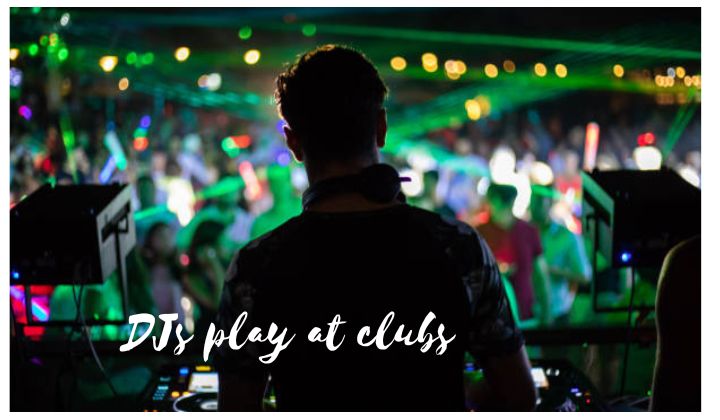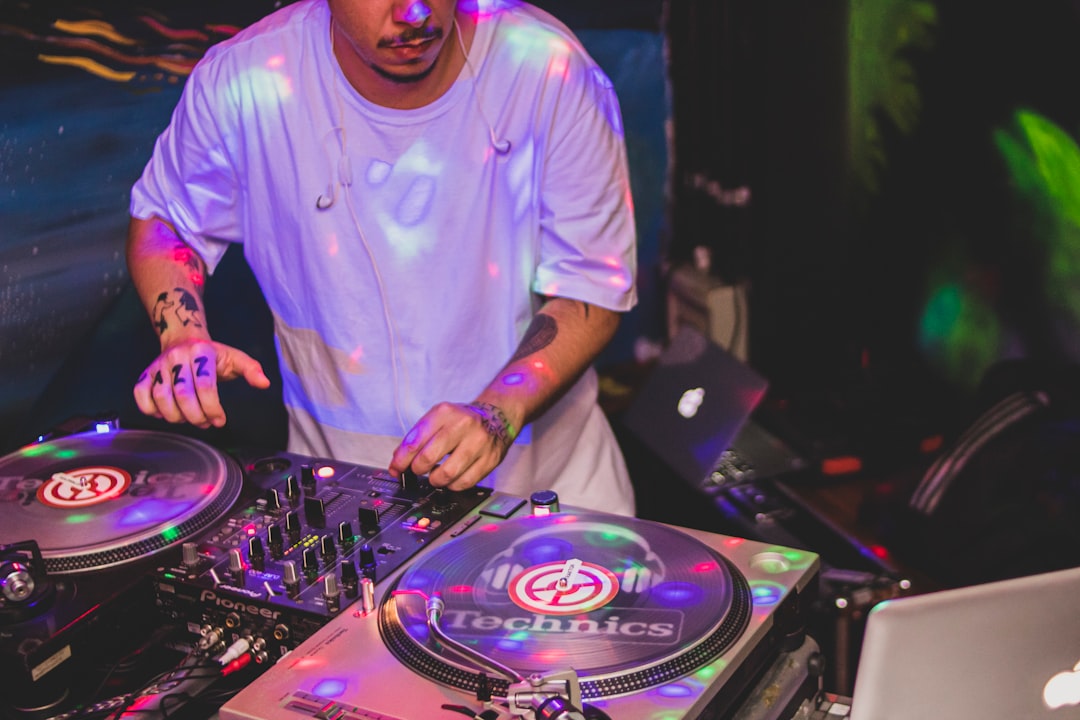What songs do DJs play at clubs?
The role of music in clubs
The songs that DJs play at clubs play a crucial role in creating the desired atmosphere and maintaining the energy levels of the crowd. DJs carefully curate playlists that are tailored to the specific club and its target audience. They take into consideration factors such as the time of night, the type of club, and even the demographic makeup of the crowd. The music played sets the tone for the entire evening, whether it’s a pumping dance floor anthem or a more mellow groove for a lounge setting.
In addition to creating an energetic ambiance, DJs use music to guide and control the crowd’s emotions throughout the night. They strategically select tracks that build anticipation, create euphoria on peak moments, and provide moments of release to keep dancers engaged and entertained. It is not uncommon for DJs to mix different genres seamlessly, incorporating remixes or mashups to surprise and delight their audience. The skillful selection and mixing techniques employed by DJs ensure that club-goers have an unforgettable experience on the dance floor.
Overall, music plays a multifaceted role in clubs by setting the mood, energizing patrons, and facilitating emotional connections between people on the dance floor. The right song choices can enhance social interactions while simultaneously providing an escape from everyday life. Whether it’s through classic hits or cutting-edge electronic beats, music remains central to shaping memorable nights out at clubs worldwide.
Popular genres at clubs
One of the popular genres at clubs is EDM (Electronic Dance Music). It has gained immense popularity over the years, with DJs playing high-energy tracks that get people on their feet and dancing. The pulsating beats and catchy melodies of EDM create an electrifying atmosphere, making it a go-to choice for many club-goers.
Another popular genre at clubs is hip-hop. With its infectious beats and relatable lyrics, hip-hop gets the crowd moving and grooving. DJs often mix popular hip-hop tracks with remixes to keep the energy levels soaring throughout the night. From old-school classics to current chart-toppers, hip-hop never fails to create a lively ambiance at clubs.
Additionally, house music is another genre commonly played by DJs in clubs. Known for its repetitive beats and soulful vocals, house music creates a unique atmosphere that can range from chill vibes to intense dancefloor moments. Its versatility allows DJs to experiment with different subgenres like deep house or tech house, catering to various preferences among club attendees.
Top songs played by DJs
When it comes to the top songs played by DJs at clubs, there are a few tracks that consistently make the list. One such song is “Levels” by Avicii, which has become an iconic anthem in the EDM genre. With its catchy melody and infectious beats, this track never fails to get the crowd moving on the dance floor. Another popular DJ favorite is “One More Time” by Daft Punk. Known for their unique blend of house and electronic music, Daft Punk’s timeless hit continues to be a staple in DJ sets around the world.
In addition to these classics, there are also newer tracks that have gained popularity among DJs. “Turn Down for What” by DJ Snake and Lil Jon is one such example. This high-energy trap anthem has become a go-to choice for DJs who want to amp up the energy in their sets. Similarly, “Lean On” by Major Lazer featuring MØ has also become a favorite among DJs due to its infectious tropical house vibes and catchy chorus.
Overall, when it comes to club settings, DJs often rely on a mix of classic hits and trending tracks that are guaranteed crowd-pleasers.
The importance of reading the crowd
Reading the crowd is an essential skill for DJs when it comes to deciding what songs to play at clubs. The energy and vibe of the crowd can change throughout the night, so being able to gauge their preferences and adjust the music accordingly is crucial. By closely observing the dance floor, a skilled DJ can identify which songs are resonating with the crowd and keeping them engaged. This allows them to tailor their playlist on-the-fly, ensuring that they maintain a high level of excitement and keep everyone on their feet.
Moreover, reading the crowd goes beyond just selecting popular tracks. A DJ needs to consider factors such as tempo, genre, and mood when curating their setlist. They must be able to adapt their musical choices depending on whether people are in a partying mood or if they need a break from intense beats. Additionally, understanding different demographics within the audience is vital; what may work for one group might not resonate with another. Overall, reading the crowd not only allows DJs to create an unforgettable experience but also helps in building a rapport with club-goers by providing them with exactly what they want – a night filled with great music that keeps them moving all night long.
Requests and audience engagement
Requests and audience engagement are essential aspects of a DJ’s job, especially when it comes to selecting the right songs to play at clubs. DJs often receive numerous song requests throughout their sets, as clubgoers want to hear their favorite tracks or specific genres that resonate with them. These requests range from popular chart-toppers to underground hits, and DJs must carefully consider which songs will keep the crowd engaged and energized on the dancefloor.
Engaging with the audience goes beyond simply fulfilling song requests; it involves reading the vibe of the crowd and understanding what they want to hear in that particular moment. Skilled DJs have a keen sense of observation and can gauge the energy levels on the dancefloor, allowing them to select tracks that will enhance the overall atmosphere. By paying attention to how people respond and move on the dancefloor, DJs can adjust their playlists accordingly, ensuring continuous audience engagement throughout their set.
In addition to requests and reading the crowd’s energy, successful DJs also use various techniques for audience engagement. They might encourage interaction by inviting clubgoers onto stage or utilizing microphone skills to hype up the crowd during certain moments in a song. Moreover, some DJs incorporate interactive elements into their performances such as remixing popular tracks live or spontaneously transitioning between genres based on immediate reactions from listeners. All these strategies contribute towards creating an immersive experience where attendees feel actively involved in shaping the musical journey of a DJ’s set.
Remixes and mashups: a DJ’s creative touch
One of the key elements that makes a DJ’s performance at clubs so electrifying is their ability to create remixes and mashups. Remixing involves taking an existing song and adding new elements to it, such as different beats, synths, or vocals, while mashups involve combining two or more songs seamlessly. By applying their creative touch to well-known tracks, DJs can breathe new life into them and give club-goers a unique experience on the dance floor.
DJs often play remixes of popular songs because they provide a fresh take on familiar tunes that audiences can still connect with. These remixes allow DJs to put their own spin on tracks that are already well-received by the masses, infusing them with their signature sound and style. Furthermore, playing remixes also helps DJs stand out from others in the industry as they showcase their creativity and ability to transform original songs into something entirely unique.
Alongside remixes, mashups are another way DJs add flair to their sets at clubs. By blending multiple songs together seamlessly, they create unexpected combinations that surprise and excite the crowd. Mashups allow DJs to experiment with different genres or eras of music, creating an eclectic mix that keeps audiences engaged throughout the night. This creative approach not only showcases a DJ’s technical skills but also demonstrates their musical knowledge and understanding of how different tracks can complement each other harmoniously on the dance floor.
Conclusion: The power of music in club culture
In conclusion, the power of music in club culture cannot be underestimated. DJs play a crucial role in creating the energetic and immersive atmosphere that club-goers crave. By carefully selecting and mixing songs, they have the ability to transport people to another world, where inhibitions are shed and pure joy takes over.
One of the key factors that determine what songs DJs play at clubs is the genre or style of music that resonates with the audience. Different clubs attract different crowds with varying tastes in music, so it is essential for DJs to understand their audience and cater to their preferences. From pulsating beats of techno and house music to catchy hooks of pop-infused tracks, DJs have an extensive arsenal of songs at their disposal to keep the dance floor packed throughout the night.
Furthermore, DJs also rely on their own creativity and intuition when selecting songs for their sets. They understand how certain tracks can build anticipation or create a moment of release on the dance floor. With seamless transitions between songs and cleverly crafted playlists, skilled DJs are able to craft unique musical journeys that captivate club-goers from start to finish.
Overall, music holds immense power within club culture. It has the ability to unite people from all walks of life under one roof while allowing them to express themselves freely through dance. Whether it’s a classic anthem or a cutting-edge track that pushes boundaries, music is undoubtedly one of the driving forces behind the unforgettable experiences found within clubs around the world.






